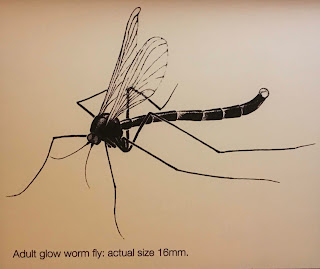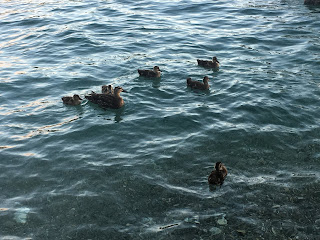A Very Scientific Description of Glowworms
Before you read this post, do yourself a favor and google some pictures of glow worms.
 |
| Glow Worms, McLaren Falls Park |
Cool huh?
Now stop googling, because I want to be the one to tell you about these little guys in my own highly scientific and professional way.
Glow worms are little cave dwelling maggots (yeah I know, way less romantic when you learn that) that have four stages of life, egg, larvae, pupa, and adult fly.
- Egg
Glow worms hatch from eggs. That’s... pretty much the most interesting part of this phase.
- Glowey glowey larvae
Glow worms spend most of their lives (about 11 months) in this stage, the devious little monsters.
 They hang from the ceiling and glow like little stars, (hence the Maori name titiwai,) to give wandering insects a false impression of an escape from the dark cave.
They hang from the ceiling and glow like little stars, (hence the Maori name titiwai,) to give wandering insects a false impression of an escape from the dark cave.
But nah.
 |
| New Zealand Glow Worms |
Instead, the insects get stuck to some sticky strands of mucus (gross) the larvae hang from their perch in the ceiling.
When the bugs get nice and stuck, it’s dinner time for the sneaky glow worms.
Yum. Mosquitos.
Yum. Mosquitos.
- Pupa is just a funny word for chrysalis
Throwback to my kindergarten education butterfly unit!
Even glow worms go through that teenage phase where they shut themselves in their rooms to wait out their body transformations. Except when I locked my bedroom door and played Evanescence on a portable CD player on repeat, the less melodramatic glow worms opt out of social interaction altogether and make a cocoon around themselves until adulthood.
We all do what we gotta go, amiright?
- It flies... then dies.
In a surprisingly relatable turn of events, adulthood seeps the life out of the glow worms.
Unfortunately, when they reach maturity, their lifespan drops drastically to just a few days.
Their digestive systems are designed for slurping up mosquitos like ramen noodles in the larva stage, but they aren’t so good at the eating part post-puberty—seeing as they have no mouths. Turns out those are important for eating purposes.
So the adult flies starve to death in days.
Not the best design, but who am I to judge?
Well in those few days, the flies get busy.
They have just enough time to find a mate faster than a Provo engagement and reproduce before keeling over from exhaustion and starvation.
So that’s interesting.
Thanks for tuning in to this very scientific description of glow worms. I'm here to educate you all. Keep posted for more New Zealand adventures and science as interpreted by yours truly.
Kia ora!




Comments
Post a Comment